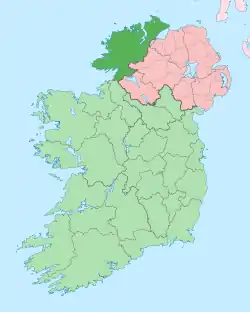Inishkeel
Inishkeel (Irish: Inis Caoil)[3] is a small tidal island and a townland[1] off the coast of County Donegal, Ireland. The closest village on the mainland is Narin.
| Native name: Inis Caoil | |
|---|---|
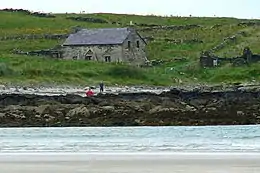 Building at the south east end of Inishkeel | |
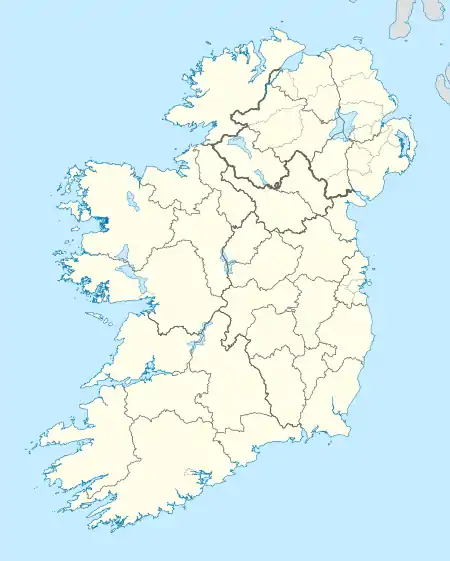 Inishkeel | |
| Geography | |
| Location | Atlantic Ocean |
| Coordinates | 54°50′51″N 8°27′22″W |
| Area | 0.391 km2 (0.151 sq mi)[1] |
| Administration | |
| Province | Ulster |
| County | Donegal |
| Demographics | |
| Population | 0 (2011[2]) |
Geography
The island is located in Gweebarra Bay around 250 m from the coast. A sandy tidal bank connects, with low tide, the island with the mainland.[3]
History
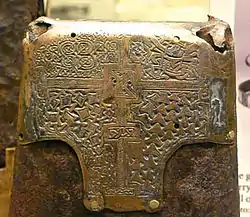
During the 6th century A.D. a small community of monks settled on the island. Their religious leader was Saint Conall Cael, from whom the island later derived its name. During the following centuries Inishkeel was a traditional destination of pilgrimages. Remains of the church and the connected buildings as well as some carved stones can be seen on the island.[4] For its artistical and archeological importance the island was declared National Monument (code: DG064-003).[5] A bell known as St Conall Cael's Bell remained on Inishkeel up to the 19th century and was then acquired by the British Museum.[6]
References
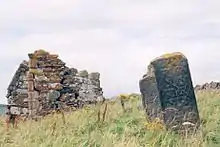
- "Inishkeel Townland, Co. Donegal". www.townlands.ie. Cóipcheart Townlands.ie. Retrieved 2016-05-09.
- Population (Number) by Off Shore Island, Year and Sex Central Statistics Office
- Liam Ronayne (2000). Donegal: South of the Gap. Dundurn. ISBN 9781900935159. Retrieved 2016-05-09.
- "Inishkeel Monastic Site". www.megalithicireland.com. Retrieved 2016-05-09.
- National Monuments in State Care: Ownership & Guardianship (PDF). National Monuments Service / Seirbhís na Séadcomharthaí Náisiúnta. 2009. Retrieved 2016-05-09.
- Rowena Loverance (2007). Christian Art. Harvard University Press. ISBN 9780674024793. Retrieved 2016-05-09.
- Commissioners 4th Rpt, p.15 Newport West E Division
See also
![]() Media related to Inishkeel at Wikimedia Commons
Media related to Inishkeel at Wikimedia Commons
